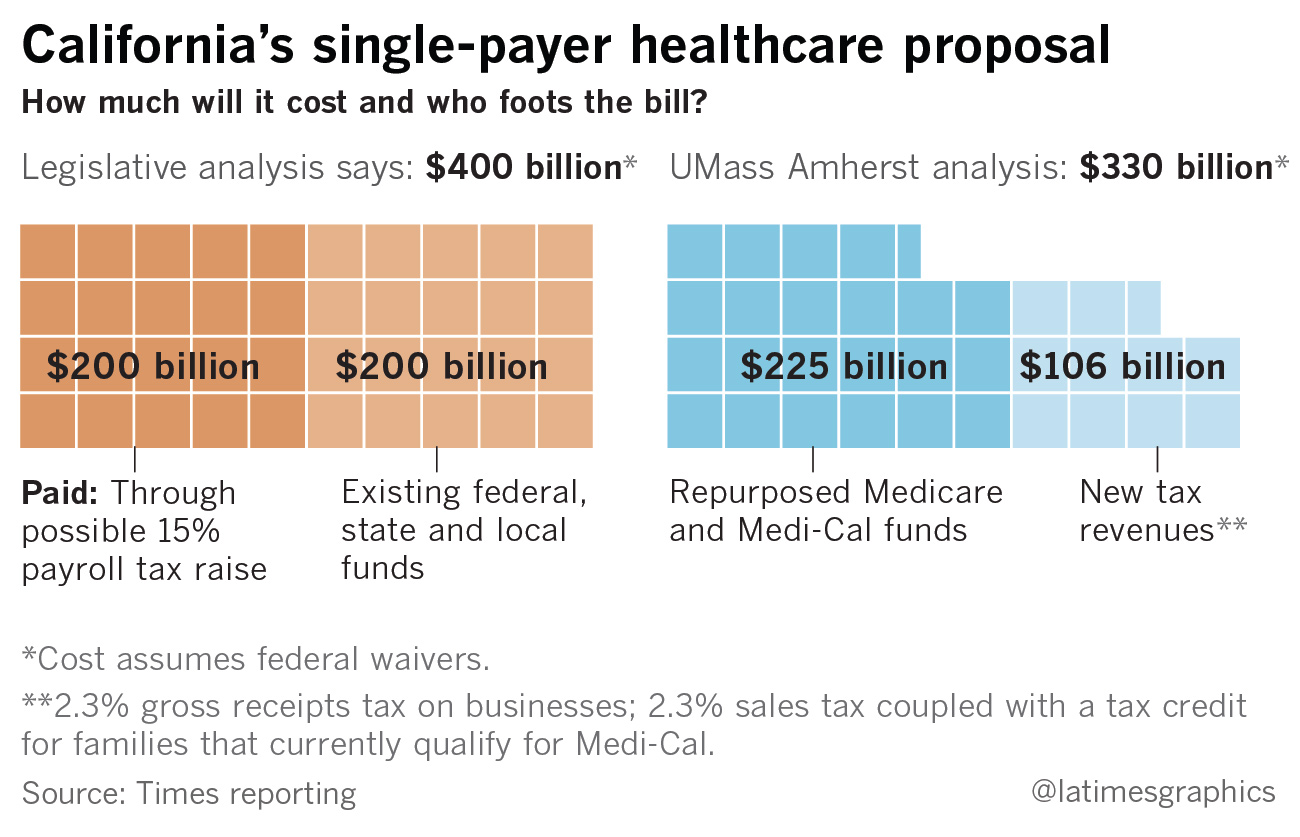See how both circumstances further divorce the client from choice and from the physician or other care entities?Free market concepts have not failed health care, however health care hasn't been allowed to naturally utilize the complimentary market in nearly a century. (Not too surprisingly, due to federal and state government laws and policies, numerous aspects of the health care community have been skewed, cancelled or downright forbidden.
How can a specific pick and select on their own if government and 3rd celebrations are paying? They can't. There's the rub for all who promote interacted socially medicine, government single-payer, employer based medical insurance, or anything but the first-party transaction of the patient choosing and paying the caregiver straight. So "healthcare"- all the industries, interests, products and services that comprise the ecosystem-must be allowed by government to welcome the effectiveness and fairness of the free enterprise.
The free enterprise reacts to requirements and wants by supplying these products and services with exceptional quality, performance and different price choices. Quality goes up and price comes down through totally free market competitors, not federal government edict. All patients, federal governments, and all of, so-called, "healthcare," would gain from direct free market competition.
So, let's not use the word "healthcare," as it is far too broad. People keep getting it confused with insurance "coverage." There's health insurance, which need to be called illness insurance. And treatment, which is what doctors do. Individuals have to be accountable to look after their own health with their own unique worth systems.
We count on marketing to help fund our award-winning journalism. We advise you to turn off your advertisement blocker for The Telegraph site so that you can continue to access our quality content in Substance Abuse Facility the future. Thank you for your support.

The Facts About Which Of The Following Represents The Status Of A Right To Health Care In The United States? Revealed
HEALTH SYSTEM: all the activities whose main purpose is to promote, bring back or maintain health (The World Health Report 2000 Health systems: enhancing performance) MEANINGS FROM THE WHO GLOSSARY OF TERMS (offered at: http://www. wpro.who. int/chips/chip04/ definitions. htm). A health center that provides a range of different services for clients of various age and with differing illness conditions.
A medical facility at the first referral level that is accountable for a district or a defined geographical location consisting of a specified population and governed by a politico-administrative company such as a district health management group. The role of district health centers in main healthcare has been broadened beyond being dominantly alleviative and corrective to consist of marketing, preventive, and instructional roles as part of a main health-care approach.
A centre that provides services which are usually the very first point of contact with a health specialist. They consist of services offered by family doctors, dentists, community nurses, pharmacists and midwives, among others. All graduates of any professors or school of medicine, really operating in the nation in any medical field (practice, teaching, administration, research, lab, etc.).
The person may or might not have previous nursing education. All persons who have actually completed a programme of fundamental nursing education and are certified and registered or authorized to provide responsible and competent service for the promotion of health, prevention of disease, the care of the ill, and rehab, and are in fact operating in the country (what does cms stand for in health care).
All graduates of any professors or school of dentistry, odontology or stomatology, actually working in the country in any oral field. All workers who react to the nationwide meaning of health-care suppliers and are neither physicians/doctors, midwives, nurses, pharmacists, or dentists. Inpatient. An individual who is officially admitted to a health-care facility and who is released after several days.
The 7-Minute Rule for Why Was It Important For The Institute Of Medicine (Iom) To Develop Its Six Aims For Health Care?
An individual who goes to a health-care facility for a consultation, and who leaves the facility within 3 hours of the start of consultation. An outpatient is not officially https://trevoriatv301.postach.io/post/the-basic-principles-of-why-was-it-important-for-the-institute-of-medicine-iom-to-develop-its-six-aims-for-health-care confessed to the center. MEANINGS FROM THE EUROPEAN OBSERVATORY ON HEALTH SYSTEMS AND POLICIES (offered at http://www. euro.who. int/observatory/Glossary/ TopPage?phrase =D) Ambulatory care. All kinds of health services offered to patients who are not confined to an institutional bed as inpatients throughout the time services are rendered (USAID, 1999).

Ambulatory care services are offered in lots of settings varying from doctors' offices to freestanding ambulatory surgical centers or cardiac catheterization centres. In some applications, the term does not consist of emergency services provided in tertiary healthcare facilities (USAID, 1999). Day care. Medical and paramedical services provided to clients who are formally confessed for diagnosis, treatment or other types of health care with the intent of discharging the client the same day.
Long-term care includes a broad variety of aid with day-to-day activities that chronically handicapped individuals require for a prolonged amount of time. Long-lasting care is mainly interested in keeping or improving the capability of elderly people with disabilities to operate as independently as possible for as long as possible; it also encompasses social and environmental requirements and is for that reason more comprehensive than the medical model that dominates intense care; it is primarily low-tech, although it has actually become more complicated as elderly persons with complicated medical needs are released to, or stay in, standard long-term care settings, including their own homes; services and real estate are both vital to the advancement of long-lasting care policy and systems.
Social care. Solutions related to long-term inpatient care plus community care services, such as day care centres and social services for the chronically ill, the senior and other groups with unique requirements such as the psychologically ill, psychologically handicapped, and the physically handicapped. The borderline between healthcare and social care varies from country to nation, particularly regarding social services which involve a substantial, but not dominant, health-care element such as, for example, long-lasting look after dependent older people.
To make sure healthcare coverage for everyone in the United States through a foundation of thorough and longitudinal primary care. The intent of this policy file is to give the American Academy of Household Physicians (AAFP) and its Board of Directors the needed advocacy versatility to consider all choices that might come prior to federal and state governments and Find out more the American people in working to attain the objective of health care coverage for all a goal based upon AAFP policy which acknowledges that health is a fundamental human right for every person which the right to health consists of universal access to timely, appropriate and budget friendly health care of appropriate quality.
All About What Does The Constitution Say About Health Care
Healthcare expenses continue to increase at an unsustainable rate and quality is far from ideal. i, ii Over the previous 20 years, policies carried out through the Kid's Medical insurance Program (CHIP) and the Client Protection and Affordable Care Act (ACA) have extended access to inexpensive health care protection to millions of formerly uninsured, non-Medicare qualified adults and kids.
8% under the implementation of these policies. iii The biggest gains in coverage have occurred amongst our most susceptible populations and young people. Nevertheless, the rollback of some provisions of these policies has increased the portion of those uninsured to 15. 5%, iv near to what it was one years earlier when our uninsured rate was nearing 17%, with almost 50 million people uninsured.